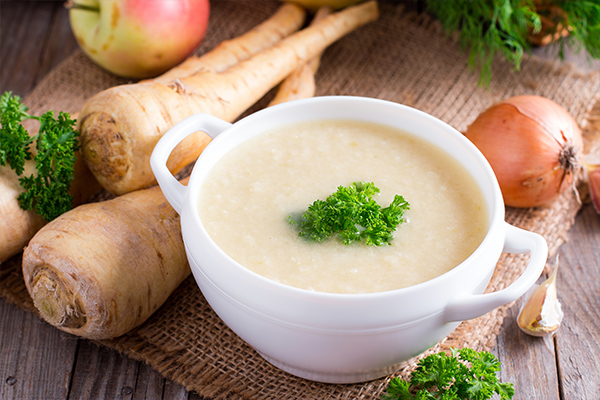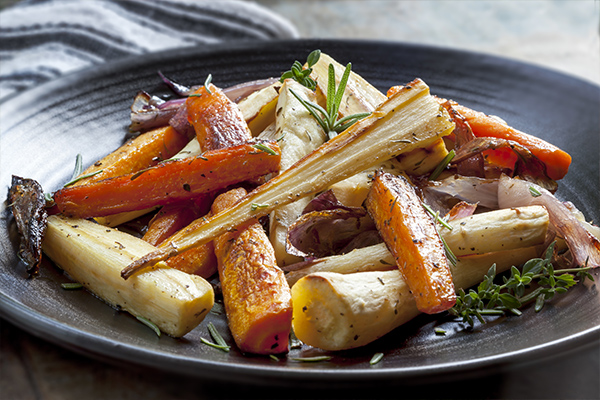The Properties of the Parsnip
The parsnip, also known as pastinaca sativa, is a vegetable with nutritional properties similar to carrots. Discover them

What is the parsnip?
It is similar to a carrot, but ivory or whitish in colour, with an aniseed flavour and much less popular than other vegetables. For centuries, the parsnip was a staple food among the most humble people. Before the potato was introduced in Europe after the discovery of America, the parsnip occupied its place and was part of the basic food sustenance of people in precarious situations. With the arrival of the potato, this vegetable took a back seat, in spite of being a food with important nutritional value. Today, the parsnip is used mainly in stews and soups. One of the best known is the puchero valenciano, but there are many other ways to prepare it.
The origin of the vegetable can be found in Asia and Europe. Although nowadays we can consume it all year round, its season is autumn-winter. In certain parts of the world it grows wild, but in Spain its cultivation is limited to the north and to mountainous areas in the centre and east.
Benefits of the parsnip
Since ancient times, the parsnip has been attributed certain medicinal properties. But it is also recommended for its high nutritional value.
•It contains vitamin K, which helps keep bones in normal condition.
• It is recommended to women during pregnancy and lactation for its vitamin B9 or folic acid content.
•This vegetable is an excellent source of fibre.
•Being a source of vitamin C, this is a vegetable with antioxidant power and protects from the effects of free radicals.
•It is a source of potassium, a mineral that contributes to muscle activity and to maintaining normal blood pressure.
How to use parsnips in the kitchen
Parsnips give dishes a hint of aniseed with a slightly spicy hue and a delicious fresh taste that is savoured from the moment it is cooked. Its most widespread use has traditionally been to use it in broths, but the parsnip is a very versatile vegetable that is suitable for many other recipes.
Parsnip cream
One of the most delicious ways to eat it is in creams or purées. You can combine it with other vegetables such as pumpkin or courgette.
Preparation:
Just fry the vegetables in olive oil for a few minutes, add water or stock if you want to give it more flavour, and let it cook for about 15 minutes. The longer you cook it, the sweeter the parsnip gets. Once cooked, blend it in the mixer or food processor until a fine creamy consistency is achieved. Spices such as curry or sage can be added to make the dish a little more special. You can also use parsnip cream as a base for meat dishes.

Parsnip sticks in the oven
Another way to prepare this vegetable is in the oven.
Preparación:
Cut the parsnip into small sticks, all of the same size. Mix with olive oil, salt and aromatic herbs and bake for 30 minutes at 220 degrees. Then turn them and continue baking for 10 more minutes.

You will have a healthy and nutritious garnish in no time!
What do you think about?
Share comments, opinions and tricks with the Community







